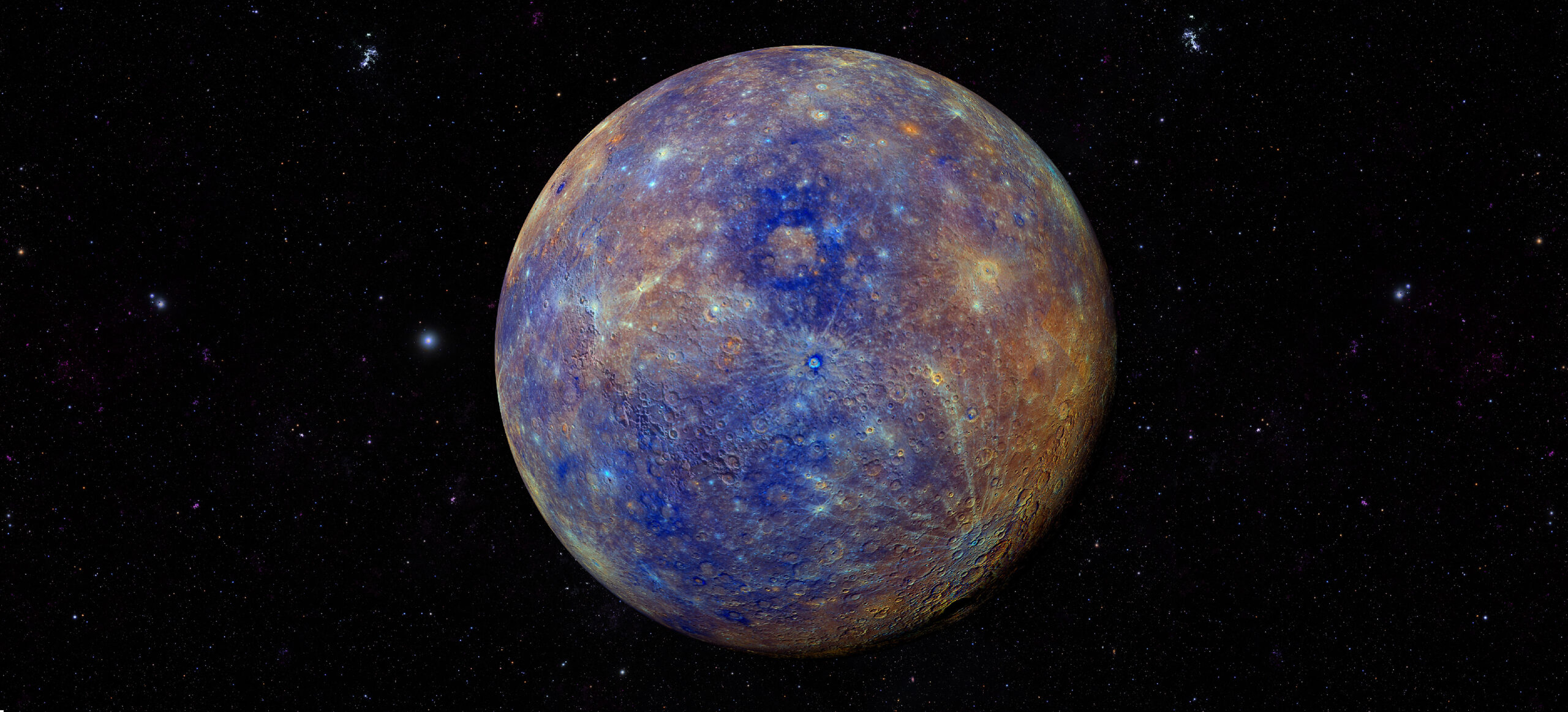
As we experience the hottest summer in over 120 years, you might think you know what it feels like to be super close to the sun. But planets like Mercury, which are closest to the Sun, make this summer seem like a breezy day with temperatures of more than 400 degrees celsius. Talk about having no chill!
Despite its extremely high temperatures, however, scientists have found that Mercury has ice — and lots of it — at its poles. The fact that the planet has ice on it has been known for a decade thanks to NASA’s MESSENGER (Mercury Surface, Space Environment, Geochemistry and Ranging) spacecraft, which is not in use anymore. The mission brought back information that there was ice on Mercury, but astronomers haven’t been able to figure out how ice can exist despite its hot environment. But now they may have some answers.
A new study from astronomers in the US has shown that Mercury holds a lot of ice deep within crater-like regions at its poles. The ice is unaffected by the heat as the sun doesn’t reach the inside of these shadow regions. These regions, which exist on the moon as well, are like huge refrigerators with low, deep floors that can hold a lot of ice. They have walls that cast big shadows and block out any radiation from the sun that can cause the ice to melt or evaporate. These insulated regions along with the angle at which Mercury’s poles face the sun, ensure that this ice will never melt, say scientists.
But how did scientists figure out that there was ice on Mercury? Especially if the ice is buried deep within impenetrable craters? Enter the Arecibo radio telescope. The 1,000-foot spherical reflector radio telescope is stationed in Puerto Rico and is not in use anymore. But it used radar technology to read celestial objects like planets, that are extremely far away from Earth. It is the same technology that is used for weather forecasting and even finding the speed of vehicles on the highway.
A radio signal, or radar light, is beamed at a planet which on hitting the surface of the planet, scatters. The scattered signal reflects back, which the telescope picks up as data. Ice has a high albedo, which means it reflects a high amount of light, and hence, shows up strongly on the telescope. However, this doesn’t mean that ice is always present in areas that reflect light brightly. The stronger the reflection, the more likely that the ice is pure and dense.
This discovery is a positive sign for future research. It not only shows the presence of water on Mercury but could help astronomers and astronauts figure out how to explore similar regions on the Moon.
Do you think we will ever be able to go to Mercury? Let us know your thoughts in the comments below.
Learn about all the latest discoveries in space on Knowledge Vine:
NASA Launches ‘Suicide Spacecraft’ to Kick Asteroid Away!
Madhavi is passionate about everything to do with books, art, literature, films, trivia and food. A former journalist, she believes that asking questions makes life interesting.
Comments
Harshada R
May 30, 2022
Yes, I think in the future, may be after a millennium we would be able to go to Mercury . Now the temperature in Mercury may be very high however the temperature may reduce and form suitable atmospheric conditions to exist life on it.
Tussar Chetri
May 19, 2022
We could, By my Guess , We can Step on Mercury at the techFuture(future full of technology)